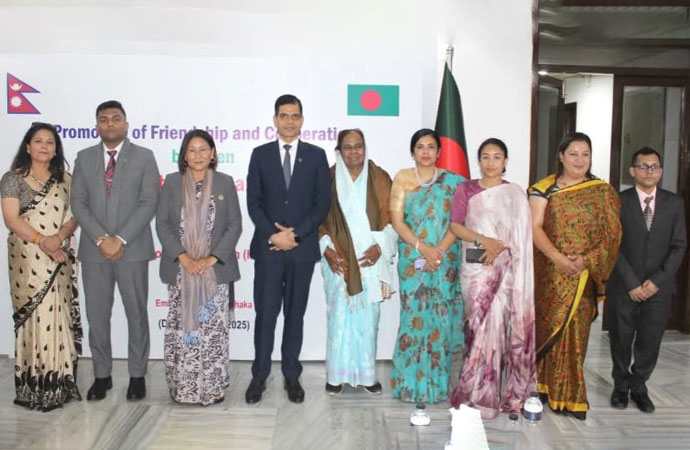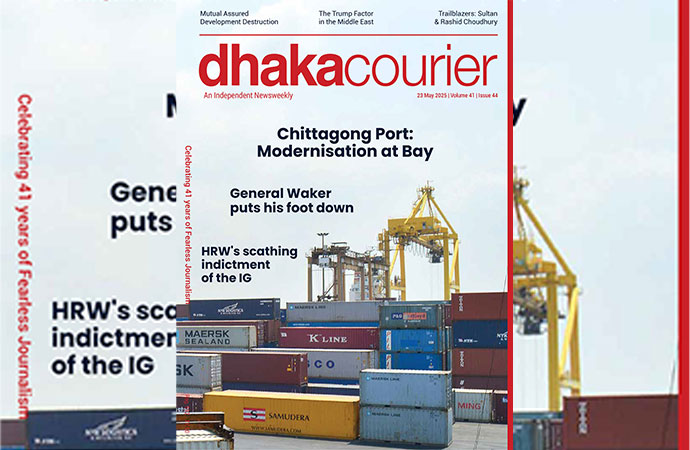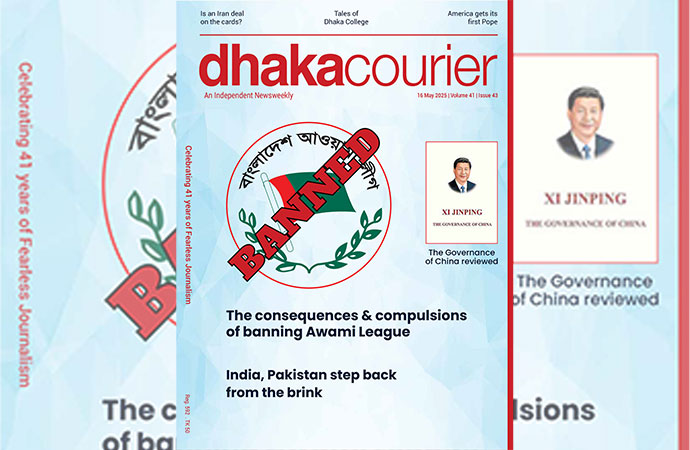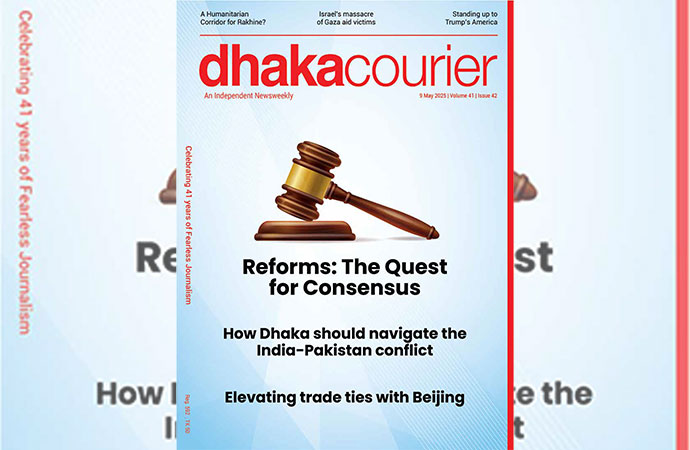Nation this week

An investigation by AFP found hundreds of articles praising Bangladeshi government policies apparently by independent experts that have appeared in national and international media, were by authors with questionable credentials, fake photos, and who may not even exist. AFP analysed more than 700 articles published in at least 60 domestic and international news sites with bylines attributed to 35 names, all of which appeared for the first time online last year.
The articles overwhelmingly endorse narratives pushed by Dhaka, with some posted on Bangladesh government websites. Many are staunchly pro-Beijing and fiercely critical of Washington -- which has issued Dhaka stiff warnings of the need for free and fair elections. While it was not possible to prove if the 35 names investigated by AFP are real, no online presence apart from their articles could be found, none has a visible social media profile, and none has published research papers in academic journals. At least 17 of the 35 claimed links to major Western and Asian universities but AFP's digital verification reporters found no records for them.
The government's spending on capacity charges for idle power plants far exceeds previously reported figures. An analysis by the Centre for Policy Dialogue in June showed Bangladesh Power Development Board paid Tk 57,970 crore in capacity charges to independent power plants (IPPs) between FY 2017-18 and FY 2021-22. The latest findings by The Daily Star reveal that the government spending on capacity charges stands at Tk 99,279 crore, once the state-run power companies are taken into account,according to year-wise production and fixed cost data obtained from the Power Development Board.
As of September 5, the country has 24,171MW power generation capacity, but produced highest 15,648MW on April 19. On September 3, the total power generation was 13,824MW against the demand for 14,399MW. As of last year, there were at least 151 power plants in the country - 63 in the public sector and 88 in the private sector.
Bangladesh ranks second globally in dengue-related cases as well as deaths in 2023, behind only Brazil which has recorded 1,187,708 cases and 912 deaths as of September 3 this year. On that day, Bangladesh health authorities reported 21 deaths, the highest in a single day reported all year. The South American nation lags behind Bangladesh when it comes to death rate however, where it is the highest in the world this year. On September 3, the number of hospitalised dengue patients totaled 127,694, and the deaths stood at 618 The DGHS calculated the fatality rate at 0.5 percent.
In Brazil, the fatality rate is 0.07 percent. After Bangladesh, Peru comes second in terms of the dengue fatality rate, with 153,547 cases and 399 fatalities. It recorded a 0.3 percent fatality rate from dengue. Later on September 7, 20 dengue-related deaths were reported by DGHS, as the total for the year soared to 691.
Private sector credit growth, a strong indicator of investment in the economy, hit a 21-month low in July due to a liquidity shortage, weakened loan disbursement capacity by banks and prevailing economic challenges. According to Bangladesh Bank data, the private sector credit growth dropped to 9.82 percent in July from that of 10.57 percent in June. The growth in July was the lowest after October 2021 when it was at 9.44 percent.
In July, banks disbursed Tk 14.85 lakh crore to the private sector. Bankers said that the private sector credit growth continued declining due mainly to a liquidity shortage in the country's banking sector. Factors such as increased dollar sales by the Bangladesh Bank, sluggish deposit growth, a surge in non-performing loans and increased cash withdrawals by clients following bank loan scams have collectively contributed to the liquidity shortage, thereby limiting banks' ability to disburse loans, they said. According to central bank data, the amount of excess cash liquidity in banks had dropped to Tk 11,000 crore in June.

























Leave a Comment
Recent Posts
Main Eid-ul-Azha congregation ...
Muslims across Bangladesh celebrated Eid-ul-Azha, one of the most sign ...
Spice Girls
Spice Girls was a British pop band. Spice Girls included: Victoria Bec ...
South Korea Is Facing a Triple Challenge
Kazi Shahidullah bahi and the DU: From a memorial me ..
France-Bangladesh cooperation in focus at ‘Strategic ..
Indian president hopes for ‘democratic, inclusive’ B ..